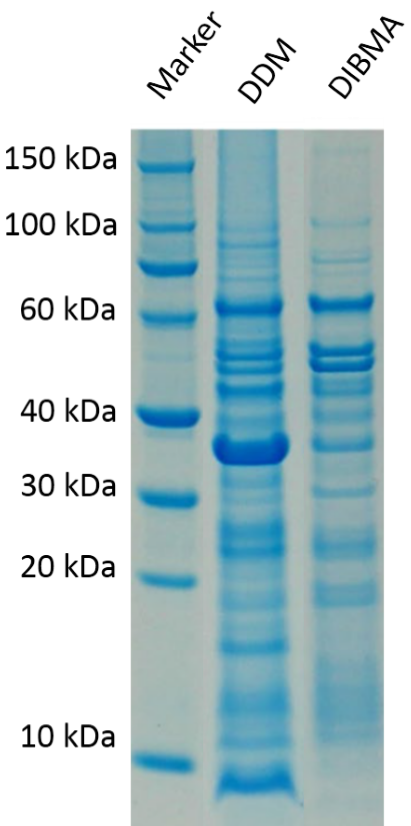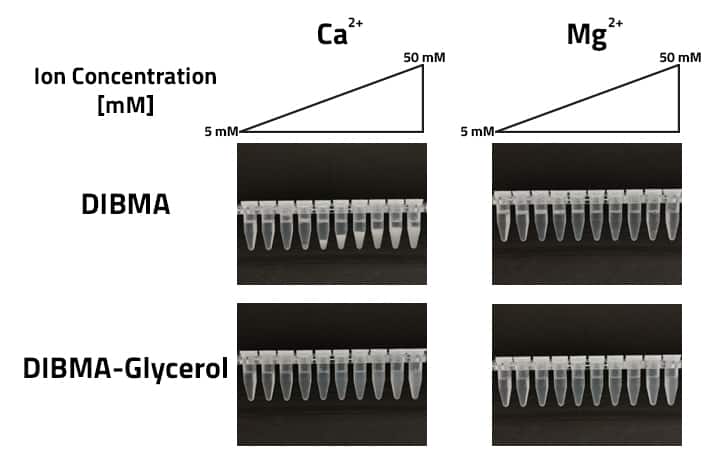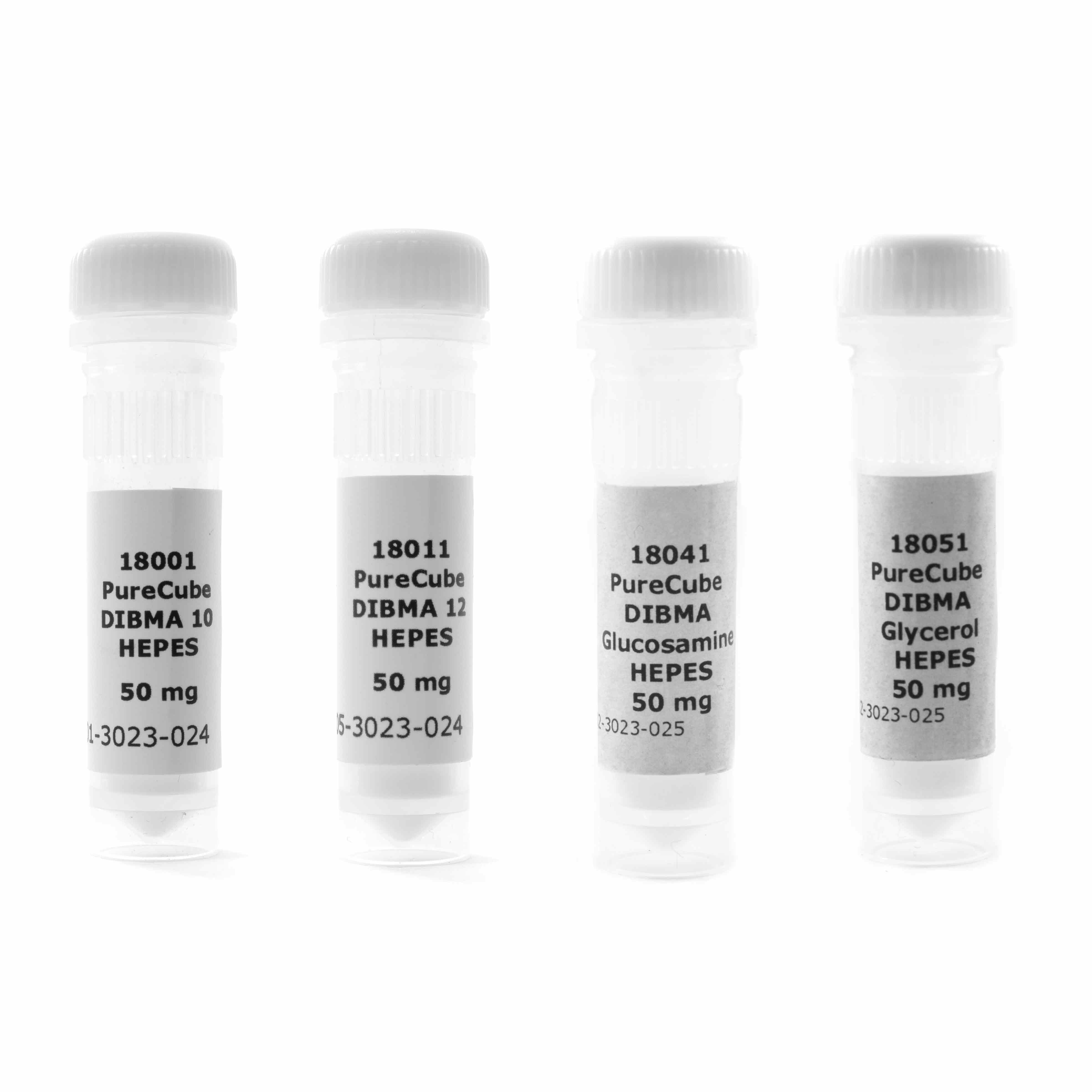DIBMA Screening Kit, HEPES (4x3x50 mg)
Order number: 18101
Description
Membrane proteins and their features and needs are as versatile as the whole cell itself. For this reason it is unfortunalety impossible to predict with an absolute accuracy which DIBMA product is suited best for the solubilization & subsequent purification of your membrane protein of interest. To assist you in the final product decision we offer this DIBMA Screening Kit that consists of our four individual DIBMAs each buffered in HEPES. This way you have a convenient option to screen for the best DIBMA for your protein under stable conditions before scaling up your assay. In case you would like to extend your polymer screening beyond the reaches of DIBMA we offer our Synthetic Nanodisc Screening Kit, that covers both SMA and DIBMA.
Datasheets
| Feature | DIBMA 10 | DIBMA 12 | DIBMA Glycerol | DIBMA Glucosamine |
|---|---|---|---|---|
| Formula Weight | 10,000 Da | 12,000 Da | 10,000 Da | 10,000 Da |
| Solubility | > 10 % in H2O | |||
| Absorbance at 280 nm | < 0.3 (1 % solution) | |||
| Mg2+ Tolerance | 25 mM | 25 mM | >50 mM | >50 mM |
| Ca2+ Tolerance | starts to precipitate at 50 mM | starts to precipitate at 50 mM | >50 mM | >50 mM |
| Shipping Temperature | ambient temperature | |||
| Storage of lyophilized copolymer | -20°C for several years | |||
| Storage of dissolved copolymer | 2-8°C for several days | |||
Citations
Lab Results
For the longest time, the science behind membrane proteins relied on detergents for both solubilization and stabilization. However, detergents such as DDM or LMNG come with their set of problems. A time-consuming screening process for the correct detergent and the constant need to add it to all buffers can be avoided. But this applies to all synthetic nanodiscs.
Figure 1 shows the amount of membrane protein of interest that was stabilized by a DIBMALP in comparison to a construct using the detergent DDM. As it can clearly be seen DDM has way fewer specific bands at the desired kDA values of around 40-60 kDa.
Figure 1 shows the amount of membrane protein of interest that was stabilized by a DIBMALP in comparison to a construct using the detergent DDM. As it can clearly be seen DDM has way fewer specific bands at the desired kDA values of around 40-60 kDa.

An alternative to traditional DIBMAs and their sensitivity to the presence of ions inside a buffer, are our modified DIBMAs with added Glucosamine or amino-functionalized diol.
As figure 2 indicates, the increased tolerance of Ca2+ is necessary. Normally DIBMA starts to precipitate in Ca2+ holding buffers at concentrations of around 25 mM. Using DIBMA-Glycerol this tolerance increases to 50 mM. There is no precipitate visible at the bottom of the tube. In comparison, normal DIBMA shows a visible precipitate at 25 mM. In terms of Mg2+ tolerance traditional DIBMA and the Glycerol-DIBMA both show a high tolerance above 50 mM.

Video
Watch our video on how nanodiscs can help you to overcome one of the most difficult challenges in protein sciences. If you are more interested in the handling of the product, take a look at our protocol video. In it you can follow a complete solubilization process using SMA.
FAQ
Is DIBMA from Cube Biotech ready to use?
Yes, our DIBMA is ready to use. You can start directly with the solubilization. Read our protocol for more information.
Which pH is suitable for DIBMA?
For DIBMA a pH of 7.5 is recommended. DIBMA does not solubilize if the pH is smaller than 6.5.
Which concentrations of DIBMA should I use for my protein?
In general, we advise you to add 2,5 % DIBMA to your solution. But the optimal conditions have to be screened by yourself (Fig. 4).
I used DIBMA for protein solubilization and a white precipitate appeared - what happened?
Your DIBMA precipitated. You should check your pH and ensure that your pH never drops down to 6.5.



